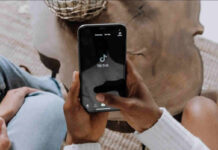The iPhone is known for its many features that often go unnoticed. Apple has always made accessibility a priority, ensuring that people with physical challenges can enjoy the iPhone just like everyone else. One of the most interesting accessibility features that is available to anyone is Sound Recognition, and it can be quite useful.
Understanding Sound Recognition
Sound Recognition is a feature that allows your iPhone to listen for sounds that you may not be able to hear, especially if you are hearing impaired. It will then alert you when those sounds are detected. According to Apple, “Sound Recognition uses on-device intelligence to notify users who might otherwise miss audible environmental alerts around them.” This feature can benefit not only the hard of hearing and hearing impaired but also users without hearing issues.
It is important to note that Sound Recognition operates solely on your iPhone. When a sound is detected, it is identified directly on your device without the need to upload anything to the Internet. This means that Sound Recognition works even without an Internet connection, keeping your alerts and events private.
Sounds iPhone can Recognize
As of iOS 16, the iPhone’s Sound Recognition feature can identify various sounds, including fire alarms, sirens, smoke alarms, pets, appliances, car horns, doorbells, knocks, glass breaking, kettles, running water, baby cries, coughing, and shouting.
How to Use Sound Recognition on iPhone
To use Sound Recognition on your iPhone, you need to enable the feature. Here’s how you can do it on an iPhone running iOS 14 or later:
1. Open the Settings app
2. Tap Accessibility
3. Under the Hearing section, tap Sound Recognition
4. Toggle the switch to turn Sound Recognition on and wait for the sound files to download
5. Tap the Sounds button once the files are downloaded
6. Select the sound you want your iPhone to recognize, such as a Doorbell
7. Toggle the switch to turn on the specific sounds you want your iPhone to listen for
After following these steps, your iPhone will continuously monitor the selected sounds and notify you when they are detected.
A Word of Caution
While Sound Recognition is a useful feature, Apple advises against relying on it in situations where you could be in danger. It is not recommended for high-risk, emergency situations, or navigation purposes.
In conclusion, Apple’s dedication to accessibility is evident in features like Sound Recognition, which can benefit a wide range of users. By following the simple steps outlined above, you can unlock the potential of this innovative feature and enhance your iPhone experience. What benefits do you see in using the iPhone’s Sound Recognition feature in your daily life? Share your thoughts with us.



